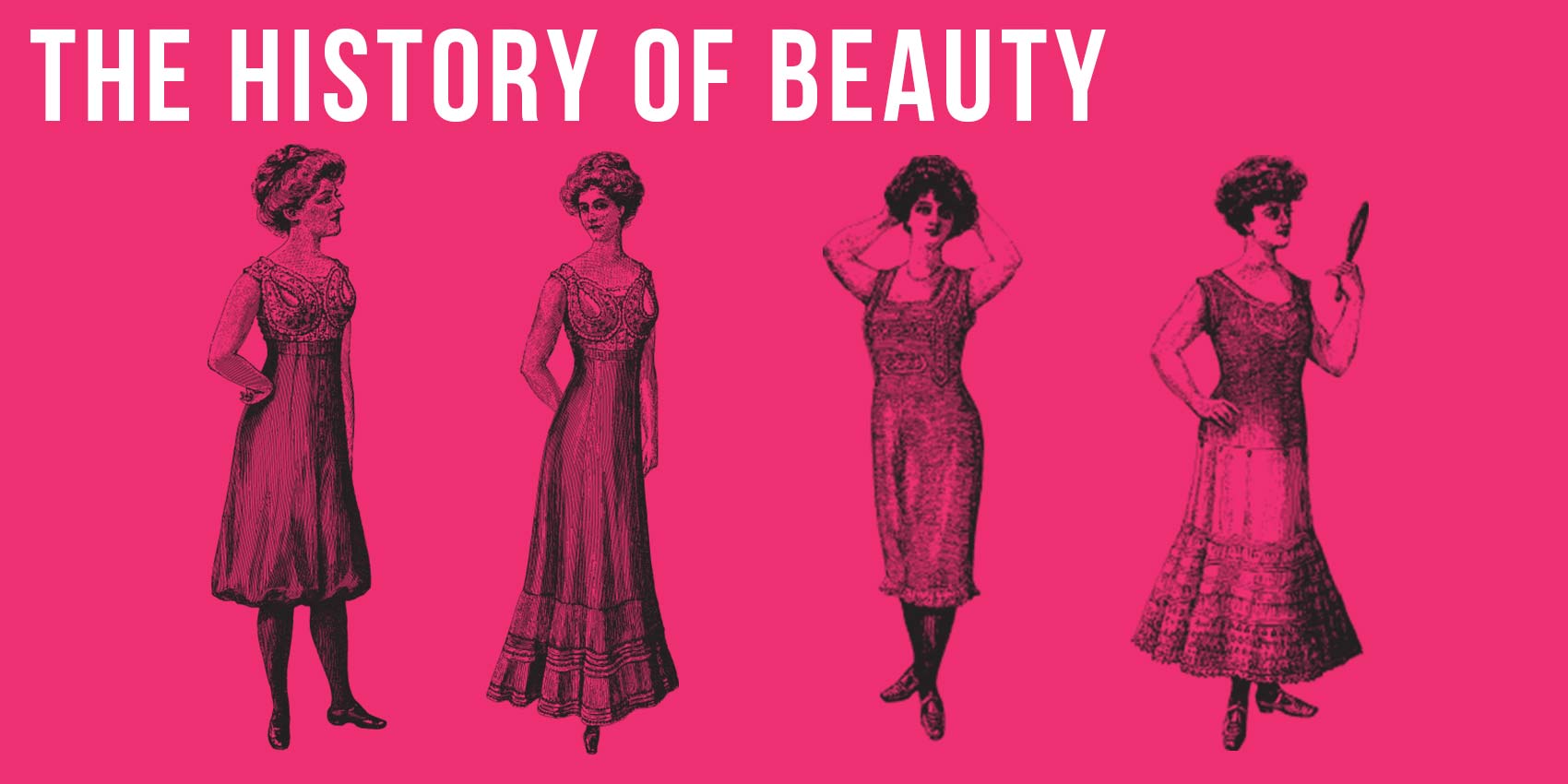22 Sep The history of beauty

Do you ever look at your body and think:
- Ugh! I hate how big my hips are
- My chest is too big
- My chest is too small
- My thighs need to be thinner
- My butt is too big
- My butt is too flat
- I don’t like my nose
- My arms are all squishy
- I don’t have enough muscle
- My ankles are too thick?
If so, you are like many many teens. Girls may be more prone to some of these thoughts, but this trend has been increasing among guys as well. Most say they have a list of things in their heads that they want to change so that they can look more attractive. So we had to ask, “Attractive according to whom?”

DID YOU KNOW? Fun Fact! The first hairspray was launched in 1948. By 1964, it out sold lipstick as a beauty product.
(Source: https://www.aol.com/article/lifestyle/2015/01/03/the-story-behind-hairspray/20577435/.)
Who says you need to look one way or the other?
The concept of beauty has changed over time. What you think is beautiful today was certainly not considered beautiful in the past, or even considered beautiful currently in different cultures. For instance:
- Blue hair was beautiful in Ancient Egypt.
- Small feet were so admired in China that girls had their feet broken and bound to keep them small (effectively crippling them).
- Corn-cobbed shaped heads were regarded as beautiful in Mayan societies where babies’ heads were place between boards to achieve this shape.
- In many tribal societies, long necks are considered beautiful. Necks are elongated by continually adding necklaces over time.
- Multiple nose, lip and face piercings are also considered highly beautiful in these communities – a fashion that is increasing in the western world.
- In the 1880’s “bustles” were worn that made a woman’s backside look extra full.
- Corsets flattened breast and narrowed waists so that hips looked extra wide. Wide hips were thought to be a sign of fertility- meaning that a woman would be able to have many healthy babies.
- Historically, an ideal woman’s body has been plump and curvacious- look at the paintings of aristocrats, they all emphasize a full body- it meant wealth as you had plenty to eat in a world that left many starving.
- As late as the 1920’s, a flat chest was considered beautiful for the women who were beginning to take their place in a male dominated work society.
The point is this: beauty is not fixed. It changes according to the standards of a society. Thus, those within that society are responsible for the consequences of those standards. Not many people in the U.S. today would condone (meaning, agree with or allow) breaking a child’s feet so that she would be crippled in the name of beauty. However, ask yourself, “Is this so different from starving a person’s body so that that person can be thin?”
What do you think is beautiful?
Is that your belief or your culture’s?
Indeed, we agree, that is a difficult question to answer. But if you have negative thoughts running through your head about your looks, ask yourself,
- “Who says I should look different than I do?”
- “Do my friends like me for how I look or for who I am?”
- “Would I be someone different if I had a different body? A different face?”
- “Who tells me what I should look like?”




Post Question:
Have you ever looked back at a photo of when you were younger and thought, “What was I wearing?” Describe your outfit!
Answer the post question here
What's being said